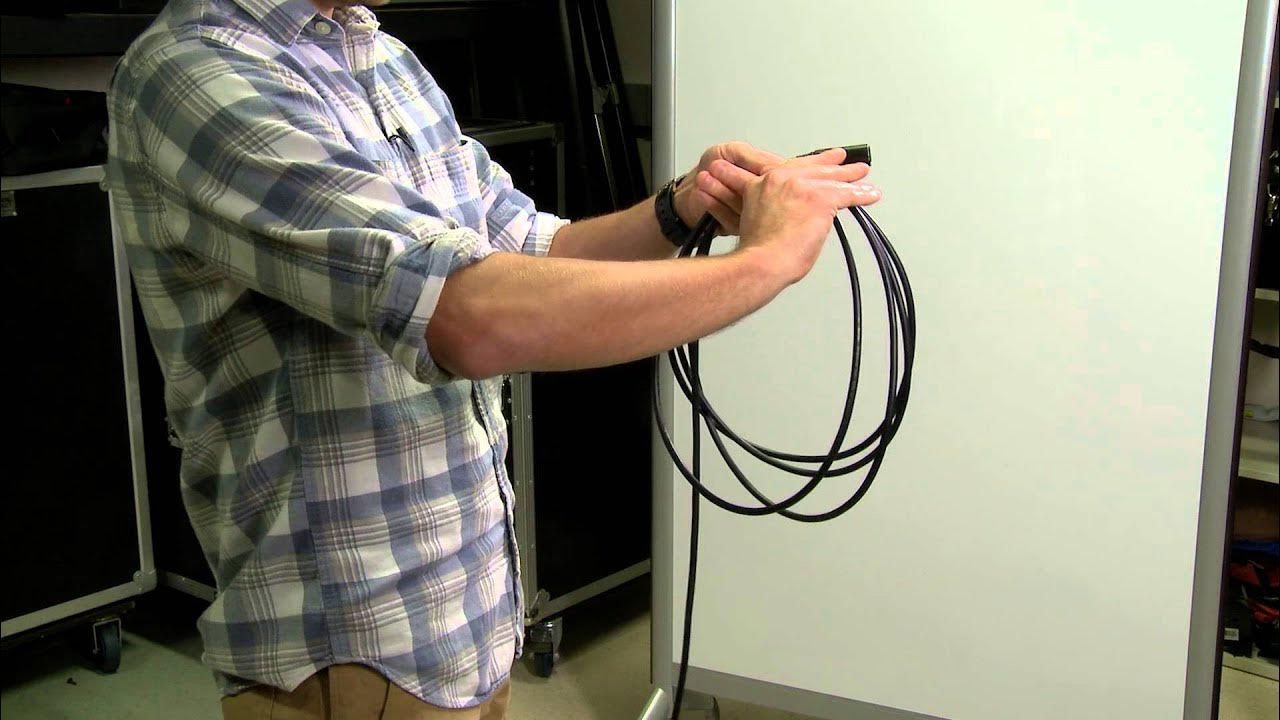This is a 10/10 YSK tip. I haven’t had to untangle my headphones or charging cable after I learned this.
Here is the same trick with a smaller cable, probably more like what most of us are coiling up every day: https://www.youtube.com/watch?v=_fsvANAT3yg&t=160s (start at 2:40)
And I love you too.
My phone decided to play this with AI generated German audio (which I can probably deactivate in Tubular, will check in a second). They must have trained the choice on freaking 90s infomercials, because it sounds cavils like the bad dubs we got on those.
This technique is often referred to as “over, under” as apposed to the more common “over, over” because it prevents damage or cable memory from twisting in one direction. Frequently used in the audio/video industry.
The biggest downside is that if you pass the end of the cable through the middle of the bundle you will create a knot every other loop. These can quickly be unknotted by gathering the knots together in line and passing an end back through. Also makes a decent magic trick.
A cable tie, hook-and-loop fastener, or a piece of rope or tie-line with a clove hitch in the middle is essential to secure cables while in transit or storage.
Also do this with garden hoses and braided style ropes
For anyone working on or around stages:
Most sane production companies standardise on over-under. Even if you find some other method superior (nothing is), you’ll get thrown out headfirst if you don’t follow the standard. Having a tech fuck around with a non-compliant cable during a changeover is far too risky.
Should be noted that there are special cases. For example, thicccc cables (i.e. 24ch analog multi) that have their own dedicated cases often go down in an 8 instead - easier to pull out and you can use a smaller case. Thank god for digital audio.
(Also, when using over-under correctly, you can throw the cable and it will land straight without any internal stresses winding it up like a spring)
If you find “over/under” confusing, that’s probably because it’s misleading terminology.
You might find it more intuitive to think of this as “outside/inside”, meaning that each new loop is made by bringing the cable’s free end up to your stationary hand either outside (away from the already coiled cable) or inside (between the already coiled cable and itself) as it forms the new loop.
I love you.
I wish I knew a way to not tangle kite string
At least it’s not that weird braid thing that was all over youtube a while back.
That one is only useful for pull ropes. That method somehow magically gives it like 4x the strength while being half the length. I had an arborist buddy show it to me and he explained they use it for moving trees before they start cutting near downed lines.
How in the fuck is this over-under method really any different from the first way he was showing how people do it wrong? 🤨
Wrapping it around your arm stretches and pulls at the inner cabling. It isn’t a single massive copper pipe in there, its numerous thin guage copper wires wrapped around each other. Wrapping it around your arm puts kinks and folds in the cable that eventually snap those little wires over time.
Not the arm one, but the way before that. Over-over.
Over over puts multiple same direction twists in the cable. Over under puts a twist, then puts the opposite twist, so you don’t have to unroll the cable (or otherwise remove the twists).
Same effect, but I learned this differently: always “over”, but apply a twist with thumb & index finger every time i loop the cable. Faster once you get it.
Nah. Just grab the audio cable by the end and tightly wrap it around your elbow and hand. It’s super fast. Then tie the other end around the middle of the loop to hold it all together.
That damages the cable over time. Which is the point of this YSK
I am loving all the downvotes for this comment. did you ever try using duct tape to bind the cable before putting it in the back of a hot humid truck?







